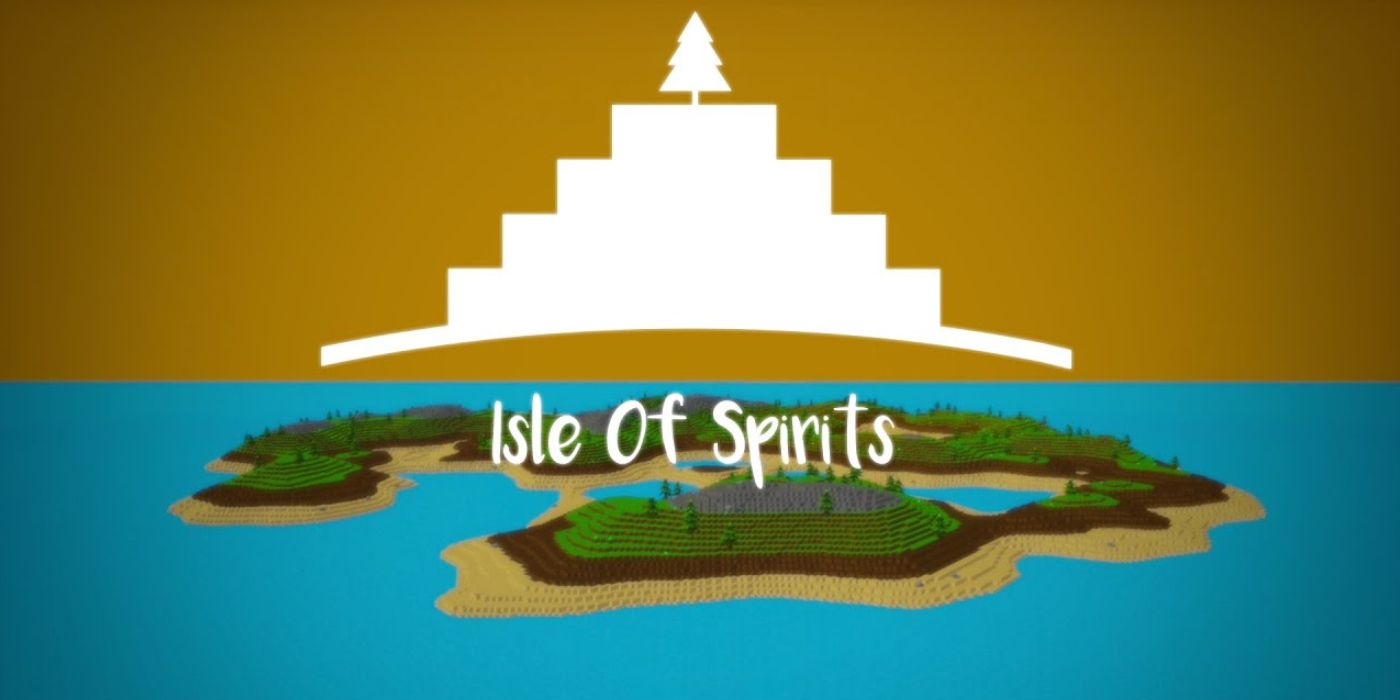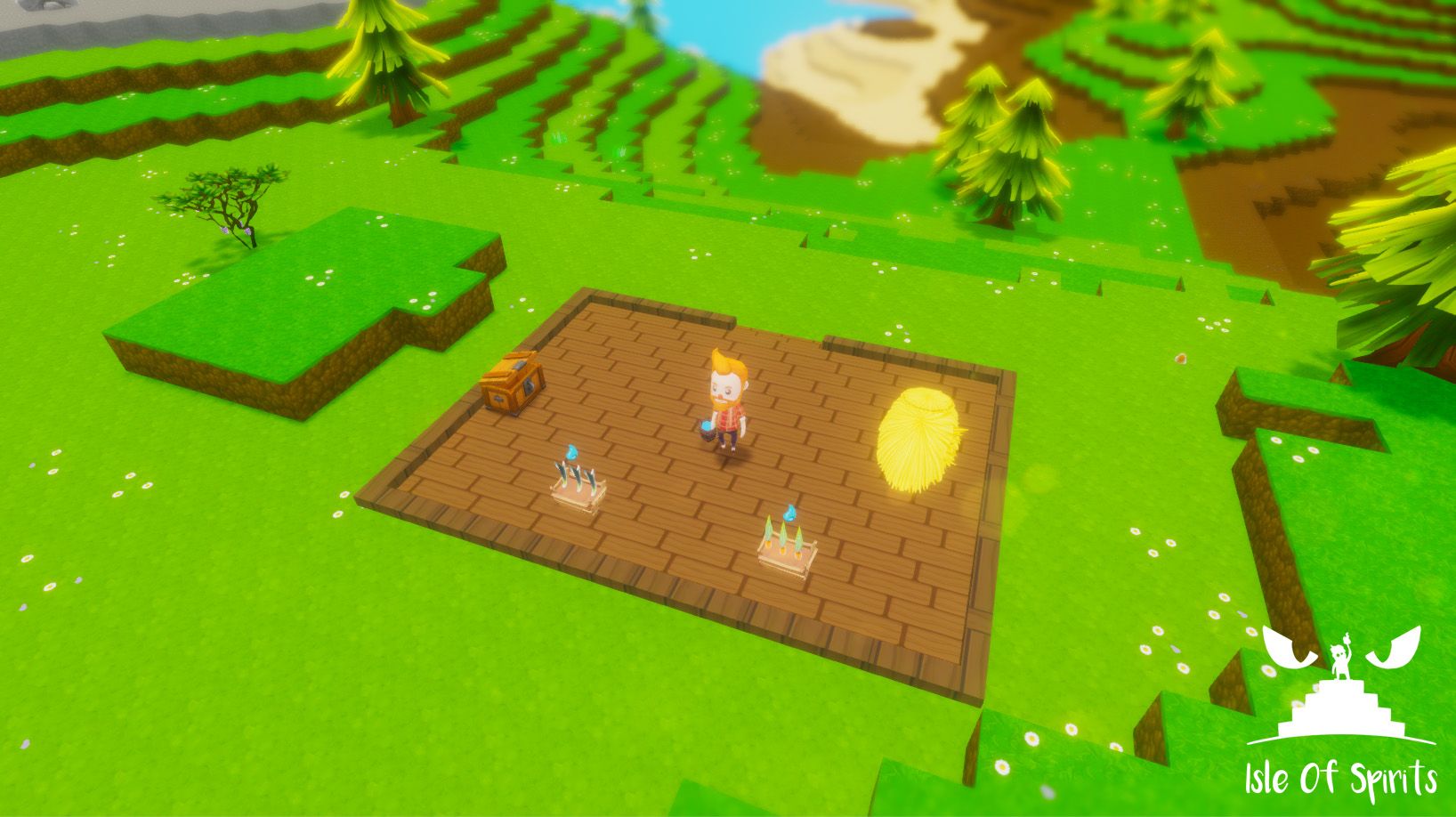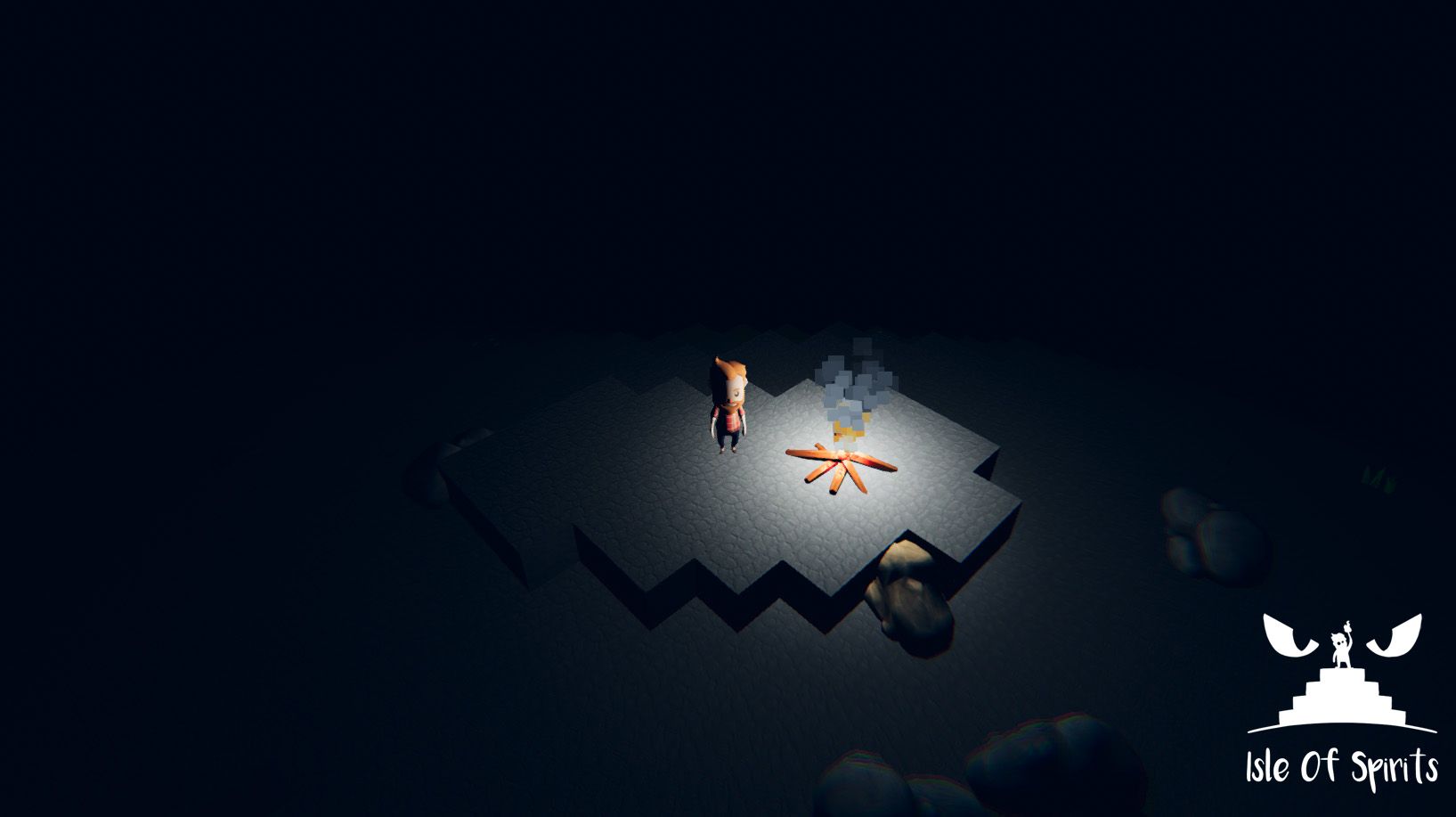Like many other indie survival games, Isle of Spirits starts abruptly and with no explanation. Players take the role of a skinny redheaded lumberjack who has washed ashore a small island with one mission, escape. Greeted with a beautiful blocky scenery, players start their journey by collecting rocks, sticks, and food to ensure their survival... and then continue to collect rocks and stick for the remainder of the game. Think Minecraft but without any mining.
Similar to most indie survival games, there isn't much to the game past collecting items and micromanaging different meters. The sole mission of the game is to craft a sailboat to escape the island, but it can take a long time for a player to collect enough materials to do just that. And there isn't much to Isle of Spirits outside of repeatedly collecting the same materials.
The gameplay can best be described almost as a clicker that takes place in a 3D environment. Players need to collect sticks and rocks to make better sticks and rocks. Once enough of the better sticks have been crafted they can then be used to make a part of the sailboat. But after crafting a single piece of the boat the player will have run out of sticks and rocks so they will need to go collect more. But there is plenty that will get in the way of players collecting sticks and rocks.
Reality is simulated in Isle of Spirits through the use of gauges that drain over time. The game has four bars the player will need to manage while making their great escape: Health, Sleep, Food, and Temperature. Meters like this can work well in other indie games, but in Isle of Spirits the meters drain way too fast, and can be a pain to fill back up. And the speed in which they drain makes keeping track of them feel more like a chore than an exciting gameplay mechanic.
Letting any one of these meters drain results in the player taking damage over time, and if the player continues to take damage they will die. Isle of Spirits also has permadeath which means if the player dies they will have to start a brand new game. Under different circumstances, this could be seen as a positive challenge, but the majority of deaths in Isle of Spirits can feel confusing or unfair. If anything, permadeath is more of an annoyance than a challenge and the game does not provide an option to turn permadeath off.
Isle of Spirits doesn't have any NPCs, hostile mobs, or friendly creatures. The island the player starts on is vacant, aside from whatever lurks in the shadows at night. While there aren't any actual NPCs, there are a few hazards that players will need to watch out for. At night the player's screen will turn black if they are not by a campfire or have torches on hand. If there are no light sources nearby, the player will continue to take damage until dying or finding a light source. This same thing happens during foggy weather and it can be frustrating in how it limits how far a player can travel from their home.
Players also have to "fight" against what the game calls microclimates, which are changes in the island's weather pattern that can deal damage to the player in a number of ways. These climate changes can range from sudden winter snowstorms to severe global warming. These are, again, ways that game prevents the player from completing their goal by limiting what they are able to accomplish.
The best way to describe Isle of Spirits is "a series of events that prevent the player from collecting sticks and rocks." It falls prey to the idea that an indie survival game is just a mix of the same mechanics that every other survival game uses, but missing some essentials that make other similar games good. In short, Isle of Spirits is just another indie survival game that has already been made time and time again.
Isle of Spirits is available for PC and Xbox One. Screen Rant was provided a digital Steam code for the purpose of this review.



